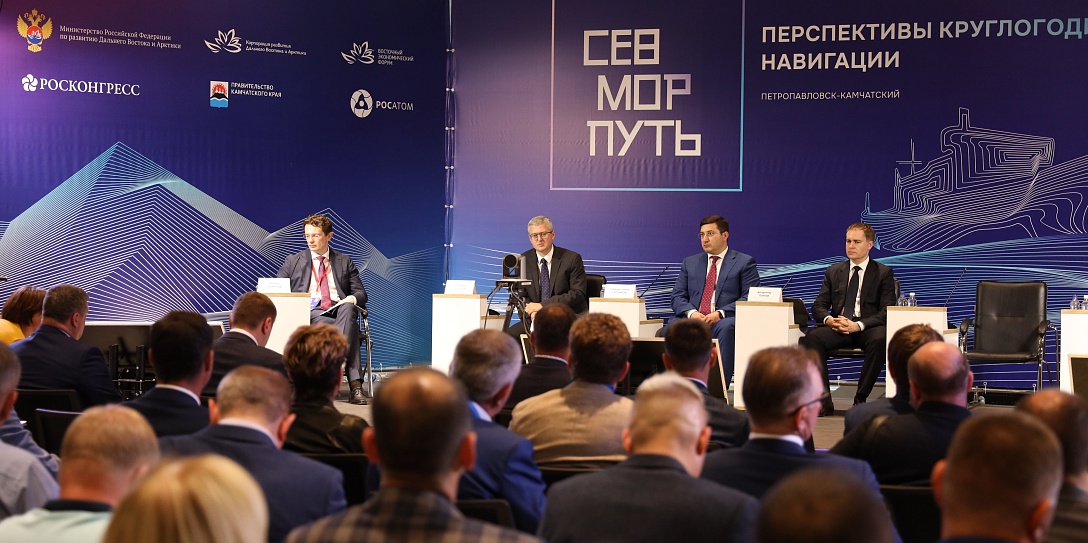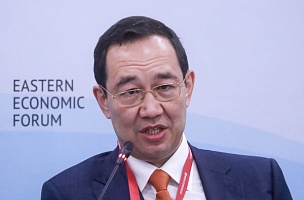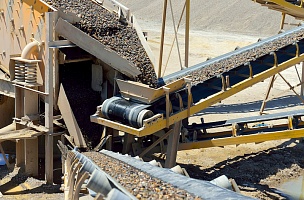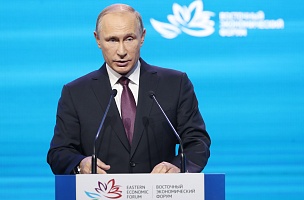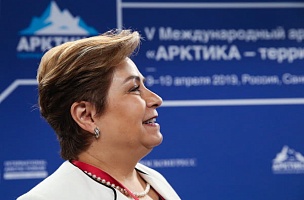An
integrated development plan for the Northern Sea Route up to 2035 has been
submitted to the Russian government. It includes both infrastructure
development and construction of new icebreakers, launching space satellites,
improving safety systems, and updating meteorological technology.
Petropavlovsk-Kamchatsky hosted an EEF
field session on Prospects for Year-Round Navigation Along the Northern Sea
Route. The session was organized by the Ministry of the Russian Federation for
the Development of the Far East and the Arctic, the Far East and Arctic
Development Corporation (FEDC), Rosatom State Corporation, Kamchatka Territory,
and the Roscongress Foundation. The event discussed the intensification of cargo traffic along the Northern Sea Route, as well as the equal
distribution of load on the transport corridor. The field session was moderated
by Mikhail Bazhenov, Head of the Infrastructure and Project Finance and
Managing Partner at Trust Technologies.
The event opened with a speech by
Kamchatka Territory Governor Vladimir
Solodov, who noted that the development of the Northern Sea Route is a key
topic for Kamchatka: "The strategic
goal is to make the Northern Sea Route a global transport artery, because it is
confirmed by numbers. It is the shortest, fastest, and most economically
feasible route. And Kamchatka is a natural, logical gateway for the new strategic transport
corridor".
However, it was noted that the
development of the Northern Sea Route and its transition from experimental to
regular operation depends on coherence in terms of infrastructure development,
construction of new vessels, safety systems, and improvement of technological
solutions.
Hadzhimagomed Huseynov, First Deputy Minister of the Russian Federation for the Development of
the Far East and the Arctic, stressed that the work on synchronization has
already been launched. The Ministry for the Development of the Russian Far East
has prepared and submitted to the Russian Government a consolidated plan that
includes all measures to ensure the year-round launch of the new transport
corridor. According to him, the development plan includes obligations on the
part of both shippers, who guarantee volumes, and the government to create the
necessary infrastructure.
"To date, according to the plan, a promising freight base has been
assembled: by 2024, it will be 90 million tonnes, and by 2030, more than 200
million tonnes. Investments of over RUB 15.6 trillion are expected in the
projects forming this cargo base, with the gross added value created being RUB
28 trillion and tax revenues to 2035 being over RUB 16 trillion," Hadzhimagomed Huseynov said. “A separate section of the
plan is dedicated to development of the icebreaker fleet, and links the
shipyards' capacity, order and future volumes: according to the document at
least 8 ice breakers will be built, and 2 of them have already been produced,
and the third will be ready by the end of this year. In addition, it is
development of safety on NSR routes, growth of satellite constellation,
strengthening of meteorological forecasts, and so on.” He also noted that a roadmap with
key events and milestones will be prepared after the EEF, by October, according
to the plan.
During the session, representatives
of state corporations and businesses spoke about their experience of pilot sailings,
as well as presenting their own technological facilities and the results
achieved.
Vladimir Panov, Deputy Chairman of the State Commission for Arctic Development and
Special Representative of Rosatom State Corporation, said: "The Far East
and the centre of Russia are inseparable concepts and words that we tend to
pronounce together. And unity means the
coherence of transport flows. When it comes to land transport infrastructure,
the Baikal-Amur Mainline and the Trans-Siberian Railway are the only routes
connecting Russia's west and east. It can only be supplemented by the Northern
Sea Route. In today's geopolitical reality, this route is sound!".
According to him, for 2021 the
company managed to ensure transportation along the Northern Sea Route of 34.9
million tonnes, which is 2 million tonnes more than the year before. This year,
despite the foreign policy situation, there has been a 5% growth compared to
the same period in the first half of last year. The value of the transported
cargo amounted to RUB 1.6 trillion. Transit cargo exceeded 2 million tonnes. He
stressed that all these figures are record-breaking. "If in 2020 and 2021 we called ultra-early and ultra-late sailings
on the Northern Sea Route experimental, now we are talking about the fact that
it will be regular year-round navigation. It should become routine".
Representatives of NOVATEK and
Sovcomflot spoke about the fleet's capabilities, which were uncovered as a
result of the experimental operation. In particular, the Yamal LNG carriers
showed higher ice-crossing capability compared to the specification
requirements, while the speed of the new gas carriers being built for the
Arctic LNG-2 project was even higher due to improved ice-breaking
characteristics. Also, a strategy for efficient icebreaker escort was developed
during the pilot voyages. To date, it has been possible to update the
navigation rules for the Northern Sea Route and extend the navigation period
from 5 to 8 months. In addition, it is planned to build a floating base for gas
transhipment in Kamchatka by 2023. This will reduce the voyage time and,
accordingly, increase the turnover of the gas carrier fleet. A similar project
is also planned for the port of Murmansk.
Alexander Bondar, Director of the Department of Educational, Scientific and Technical
Activities of the Russian Ministry of Emergency Situations, presented plans to
ensure the safety of the entire Northern Sea Route. To this end, it is proposed
to create integrated rescue centres, including units of crisis management
centres, Arctic search and rescue units and aviation units of the Russian
Ministry of Emergency Situations. “To
ensure 100% coverage of the Northern Sea Route, it is necessary to deploy
aviation units of the Russian EMERCOM in seven locations: the planned four
centres in Pevek, Sabetta, Tiksi, and Dickson, as well as in the existing
centres in Arkhangelsk, Murmansk and Anadyr, using the arm of the icebreaker
fleet. Helicopter pads are now being laid in all new ship projects,” he said.
Representatives of Roshydromet,
Hydrographic Enterprise, and Moscow State University also spoke at the event
and talked about improving forecasting, developing hydrographic infrastructure,
and environmental monitoring.
"All of the proposals presented formed the basis of the NSR
development plan until 2035. But it is worth increasing the focus on
environmental monitoring issues. I suggest that we pay special attention to
these issues during the Eastern Economic Forum," First Deputy Minister of the Russian
Federation for the Development of the Far East and the Arctic Hadzhimagomed Guseinov summed up the
event.
The results of the discussions and
conclusions from the EEF field session (a recording of the broadcast is
available here: vk.com/video-211047666_456239032), will be recommended to shape the
Forum's programme.
The 7th Eastern Economic Forum will take place on 5–8 September 2022 in Vladivostok on the campus of Far Eastern Federal University (FEFU). It is organized by the Roscongress Foundation. Registration for the media at the EEF 2022 is open at official website.
All up-to-date news on EEF
2022 preparations can be found on the Forum's official social media channels.
Telegram: t.me/roscongress


